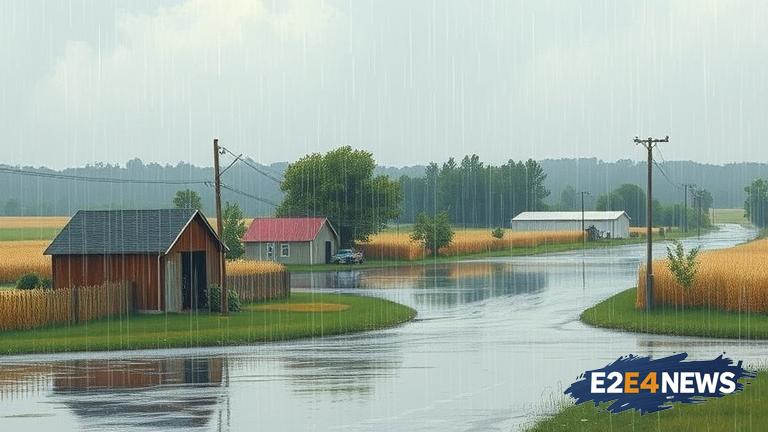The month of July 2025 will be remembered as one of the wettest on record in Iowa, with historic rainfall totals causing significant flooding and disruptions throughout the state. According to data from the National Weather Service, several areas in Iowa received over 10 inches of rainfall, with some locations experiencing as much as 15 inches or more. The excessive rainfall led to the overflow of rivers, streams, and lakes, resulting in widespread flooding that affected numerous communities. The flooding caused significant damage to homes, businesses, and infrastructure, with many residents forced to evacuate their properties. The Iowa Department of Transportation reported that several roads and highways were closed due to flooding, causing major disruptions to traffic and commerce. The state’s agricultural sector was also severely impacted, with many farmers experiencing crop losses and delays in harvesting. The rainfall was so intense that it caused several dams and levees to fail, leading to further flooding and damage. The city of Des Moines, the state capital, was particularly hard hit, with the Des Moines River reaching record levels and causing widespread flooding in the downtown area. Other cities, such as Cedar Rapids and Iowa City, also experienced significant flooding, with many residents forced to seek shelter in emergency shelters. The American Red Cross and other relief organizations were quick to respond, providing aid and assistance to those affected by the flooding. The Iowa National Guard was also deployed to assist with flood relief efforts, helping to evacuate residents and distribute supplies. Despite the challenges, the people of Iowa showed remarkable resilience and community spirit, coming together to support each other and rebuild their communities. The historic rainfall event has also raised concerns about the state’s infrastructure and flood mitigation measures, with many calling for increased investment in flood protection and prevention. The Iowa Department of Natural Resources has announced plans to conduct a thorough review of the state’s flood management systems, with a view to identifying areas for improvement and implementing new measures to prevent similar flooding events in the future. The economic impact of the flooding is still being assessed, but it is clear that it will be significant, with many businesses and industries affected. The state’s insurance industry is also bracing for a large number of claims, with many policyholders expected to seek compensation for flood-related damages. As the people of Iowa begin the long process of recovery and rebuilding, they can take comfort in the knowledge that they are not alone, with support and assistance available from a wide range of organizations and agencies. The state’s emergency management officials have praised the response efforts, saying that the swift and coordinated action of emergency responders and relief organizations helped to minimize the impact of the flooding. However, they also acknowledged that there is still much work to be done, and that the road to recovery will be long and challenging. As the state looks to the future, it is clear that the historic rainfall event of July 2025 will have a lasting impact on Iowa, shaping the state’s approach to flood management and mitigation for years to come. The event has also highlighted the importance of climate resilience and adaptation, with many experts warning that extreme weather events like this will become more frequent and intense in the years ahead. In response, the state is planning to invest in new technologies and strategies to help mitigate the effects of flooding, including advanced flood forecasting systems and green infrastructure projects. Overall, the historic rainfall event of July 2025 has been a wake-up call for Iowa, highlighting the need for greater investment in flood protection and prevention, and the importance of building resilient and adaptable communities.





